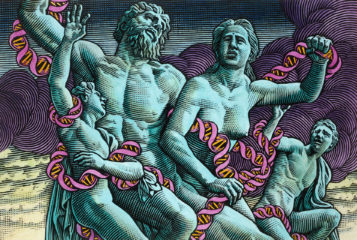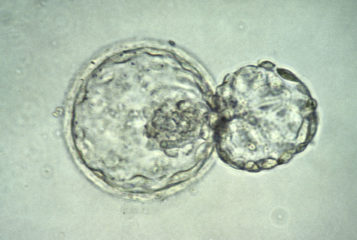A Colombian woman has become the world's first recipient of a windpipe grown in part from her own cells. Published in the Lancet journal last week, the team of surgeons from Spain, the UK and Italy, orchestrated the world's first tissue-engineered whole organ transplant. Professor Paolo Macchiarini, of the Hospital Clinic of Barcelona, carried out the operation in June this year. The success has led some to herald the technique as the beginning of 'a new age in surgical care'.
Mother-of-two Claudio Castillo, 30, was left barely able to breathe after a tuberculosis infection left a bronchus irreversibly damaged. Surgeons rarely recommend a trachea transplant, as it condemns a patient to a life dependent on immunosuppressive drugs, leaving them open to other infections. The most common resort for people in similar positions is to remove a lung, which improves health but invariably shortens lifespan. However, given the option of undertaking an experimental 'tissue engineering' surgery, so far only tried on pigs, Ms Castillo consented.
To start, the Spanish team removed seven centimetres of trachea from a deceased organ donor. Maria Teresa Conconi and colleagues at the University of Padua then stripped the windpipe of all trace of the donor's cells, using a potent mixture of detergent and enzymes. After six weeks, just a collagen 'scaffold' remained. In the meantime, bone marrow stem cells from Ms Castillo's hip had been sent to Bristol, where they were induced into becoming cartilage cells. Upon their return to Barcelona - a return voyage nearly ruined by one airline company's bureaucracy - the collagen scaffold was suffused with the cells in a special bioreactor developed at the Polytechnic of Milan. Another Bristol group seeded epithelial cells, taken from Ms Castillo's airways, inside the donor trachea. After four days of repopulating the scaffold with cells, the new trachea was sculpted to shape and inserted in place of the damaged bronchus.
Professor Martin Birchall, professor of surgery at Bristol, who helped differentiate the stem cells, was delighted with the success. 'Surgeons can now start to see and understand the very real potential for adult stem cells and tissue engineering to radically improve their ability to treat patients with serious diseases', he said.
The major benefit of the necessarily laborious procedure is clear - after five months, there is still no sign of transplant rejection, since Ms Castillo's immune system has no difficulty in recognising her own cells. The hope is that the operation might become a reality for other transplant operations.





Leave a Reply
You must be logged in to post a comment.